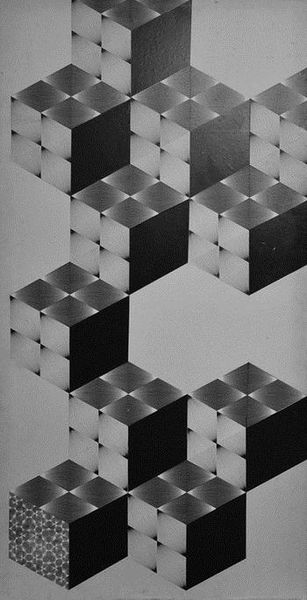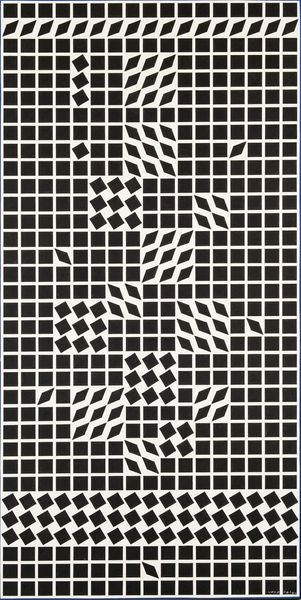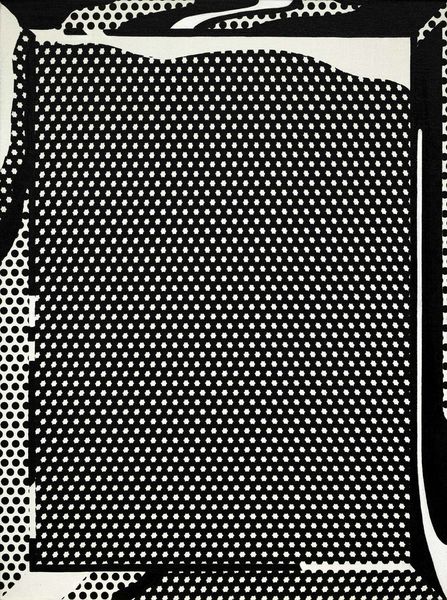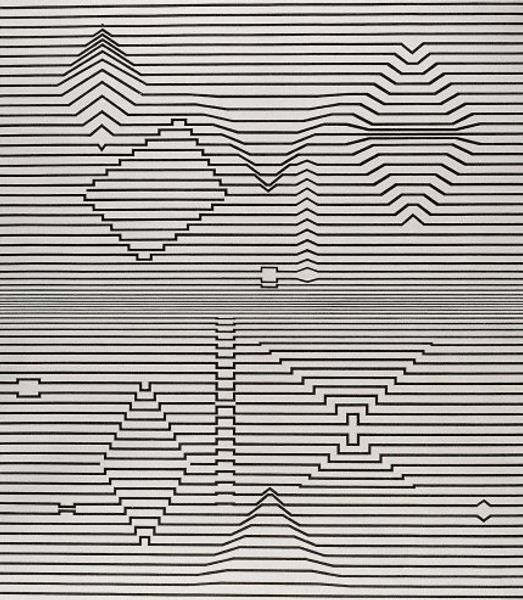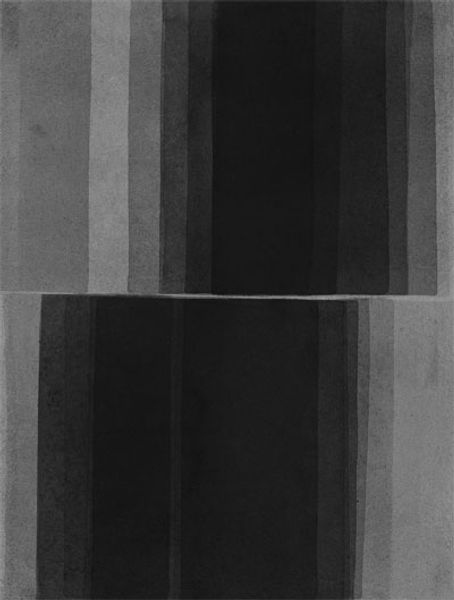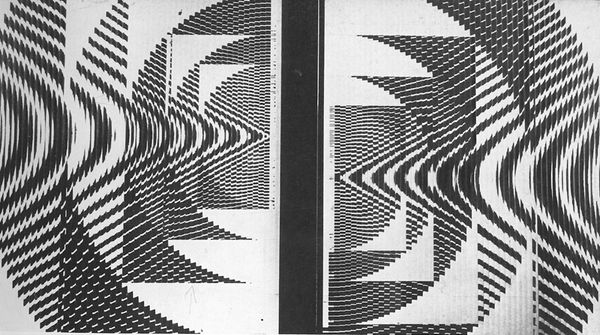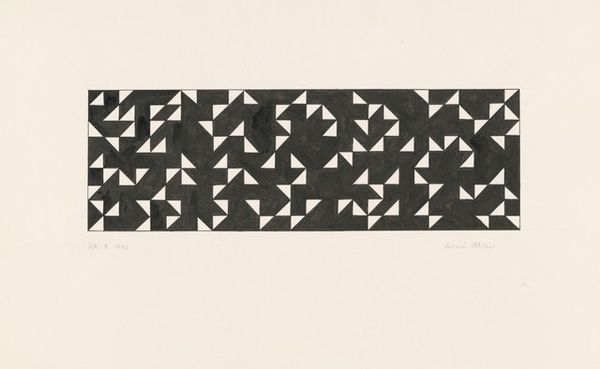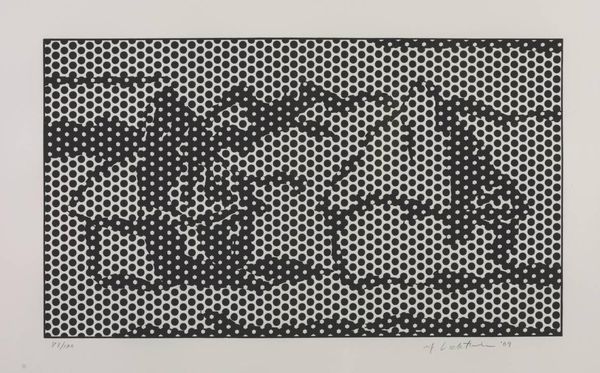
Dimensions: image: 19.4 x 90.8 cm (7 5/8 x 35 3/4 in.) sheet: 29.3 x 100.6 cm (11 9/16 x 39 5/8 in.)
Copyright: National Gallery of Art: CC0 1.0
Editor: Here we have M.C. Escher's "Metamorphosis I" from 1937, a print that's incredibly captivating. The eye just flows across the image from left to right as the architecture morphs into geometric forms. It's mesmerizing, really! How do you interpret this work? Curator: The essence of this print lies within its visual structure. Consider how Escher masterfully employs tessellation, transforming architectural shapes into repeating geometric forms and eventually into recognizable figures. Note the gradation, from complex architectural representation on the left, to simplified cuboid shapes, leading to tessellated lizards or humanoids at the rightmost part of the picture plane. The progression, rendered entirely through formal elements—line, shape, contrast—illustrates the central theme. Do you notice the rhythmic shifts in tone from light to dark and the resulting creation of spatial ambiguity? Editor: I see that. The transition is very deliberate. But what does it signify? Is there a deeper meaning? Curator: Meaning here arises from the structural relationships within the image. The careful calibration of positive and negative space, and the strategic use of visual rhythm compel our eye to travel, reinforcing the concept of metamorphosis. Think about how each shape prepares the eye for the next one. No outside references are required to interpret the theme. Editor: So it's the form itself that communicates the concept of change? Curator: Precisely. Escher is guiding us through the visual evolution. His conscious organization of forms, the manipulation of space and tone—these formal components give rise to the work’s central idea. Editor: I see. The formal analysis really clarifies how Escher conveys such a complex idea so simply through geometry. It's less about *what* it depicts and more about *how* it's depicted. Curator: Indeed. Now consider Escher's later works…
Comments
No comments
Be the first to comment and join the conversation on the ultimate creative platform.
